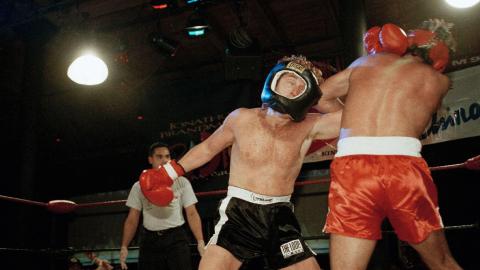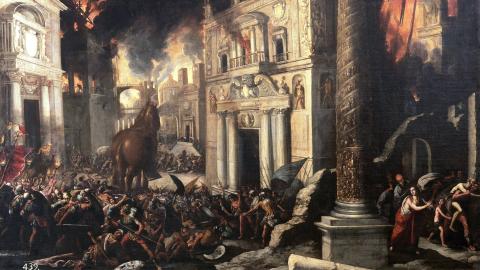Roman London
Londinium...though undistinguished by the name of a colony, was much frequented by a number of merchants and trading vessels.
Tacitus, Annals, 14.33
London as we know it would never have existed were it not for the Romans. In 47 AD, only four years after Claudian troops had invaded Kent and set up their capital in Colchester, the invaders spotted the potential of a seemingly unpromising patch of boggy ground further up the estuary, sprinkled with sand and gravel islands. The river here was narrow enough here to bridge, enabling the army to continue its push northwards. Being tidal, it was also deep enough to allow ships to come and go from the coast – making it an ideal place for a trading post.
It's believed that the army built its original crossing close to Westminster but later replaced this with a sturdy wooden bridge, the remains of which have been excavated just east of London Bridge. For 1,600 years, this was the only crossing for the Thames. Over the next ten years or so the settlement known as Londinium grew and prospered. A newly-constructed network of roads fanned out from the port, effectively linking Britain to the furthest reaches of the Empire. Foreign merchants, traders and displaced natives flocked to Londinium in search of opportunities.
But this early prosperity wasn't to last. In 60 AD, Boudica, queen of the Iceni tribe of Norfolk, chose Londinium as a key target for her revolt against Roman rule. Her timing was perfect – the Roman army was away, quelling an uprising on the Welsh island of Anglesey. Boudica and her rabble razed the whole 40 acres city to the ground, killing thousands of traders who had settled there. Her attack left a thick burnt layer of red ash in the soil which is clearly visible in archaeological excavations. It was the first great fire of London.
It didn't take the Romans long, however, to re-establish control. The strategic position of Londinium made it too important to abandon and so they quickly rebuilt it – this time, as a planned and walled Roman city.
This rebirth was the start of a golden age of trade. By 100 AD, vast quantities of goods were changing hands at Londinium, coming from and going to the far corners of the Empire. Luxury goods to meet the demands of increasingly sophisticated Roman Britains were common, such as wine and pottery from Gaul and Italy, olive oil from Spain, marble from Greece and, of course, slaves. But there was also a thriving export market for copper, tin, silver, corn, oysters and the thick woollen cloak known as the birrus Britannicus.
Ships were moored in deep water in the river and the goods transferred to stone or wooden quays in small boats. This system, known as lighterage, was instrumental in the development of the port we know today.
Did you know?
The origins of the name Londinium are lost in time. But it was probably a corruption of an existing Celtic personal name and means 'place belonging to a man named Londinios'.
















